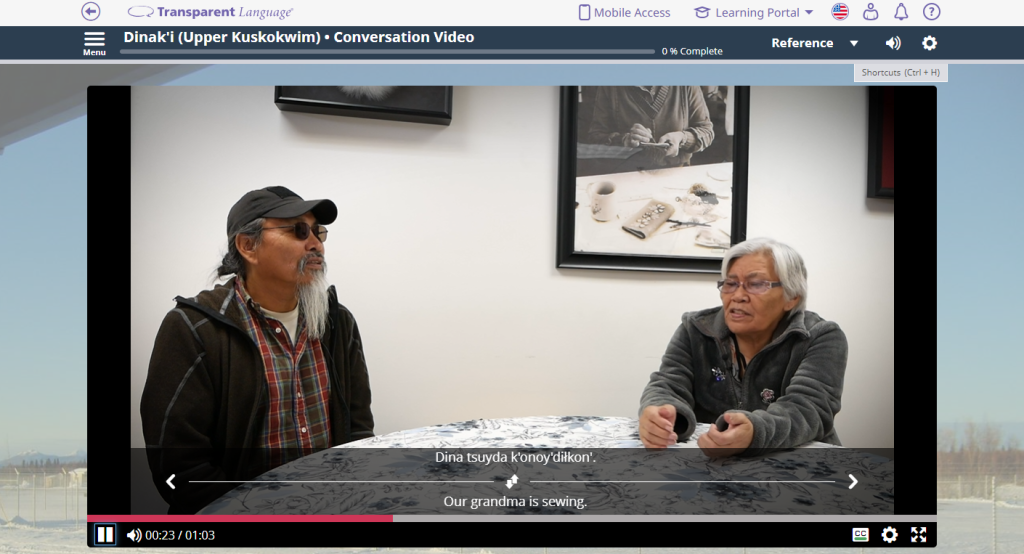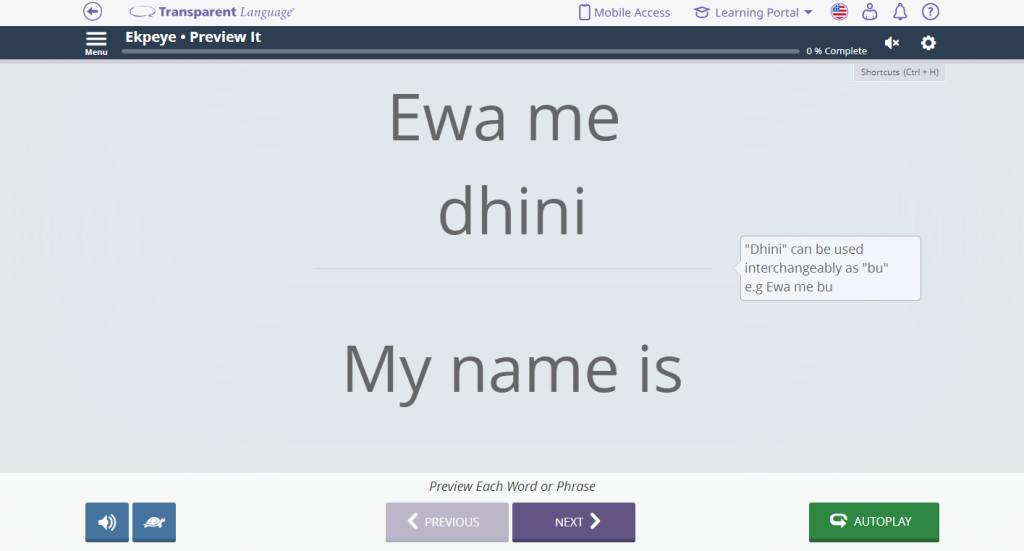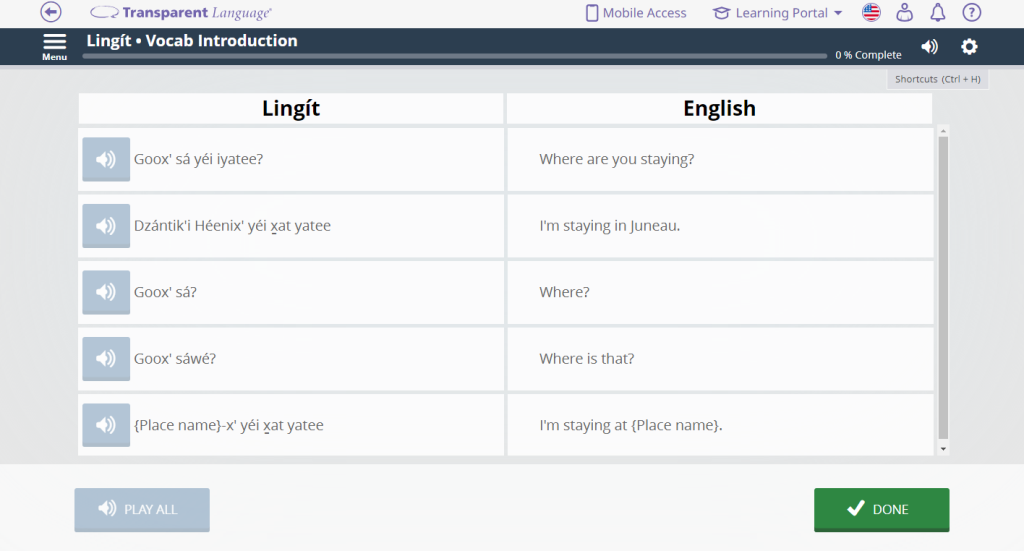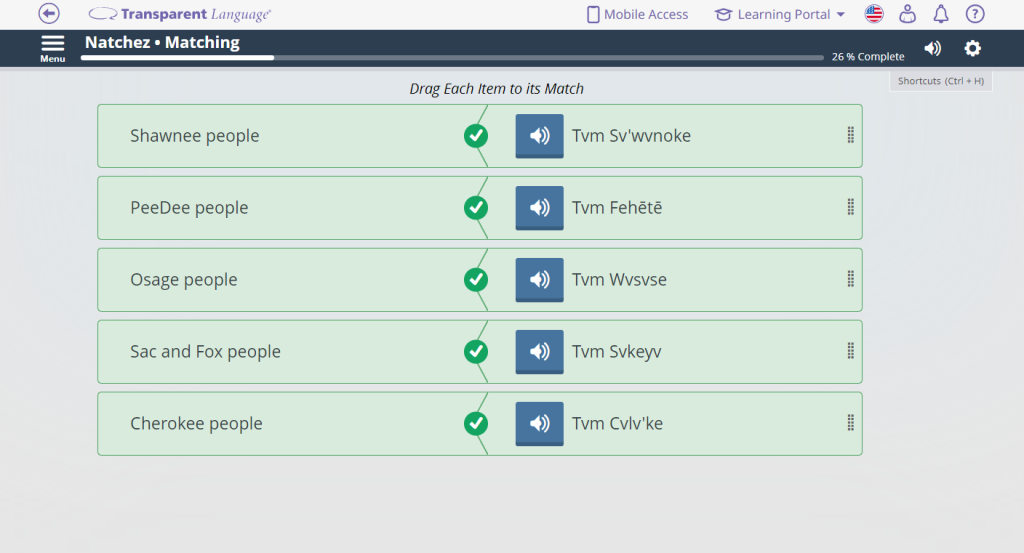4 new indigenous languages added to Transparent Language Online Posted by meaghan on Oct 14, 2024 in For Learners, Learning Material Updates
More voices.
That’s the goal. To promote language learning at large. And to protect languages at risk.
Advocating for more voices has been the goal since we started our first indigenous language course (Balinese!) way back in 2013.
Here we are—11 years and 35 indigenous languages later—marking Indigenous Peoples’ Day with four new additions to the indigenous language collection in Transparent Language Online: Dinak’i, Ekpeye, Natchez, and Lingít.
All of these courses are made possible by 7000 Languages and their community partners.
Dinak’i
Dinak’i is a Dene (Athabascan) language spoken in Upper Kuskokwim communities in Alaska.
The Conversational Dinak’i course includes 13 units with up to six lessons per unit. Lessons include examples of everyday conversations that demonstrate Dinak’i in a practical, culturally relevant context. It includes alphabet instruction, conversational videos, practice activities in speaking, listening, reading and writing, as well as information on Dinak’i grammar and culture.
The course was funded by the US Department of Education Alaska Native Education Program. It would not have been possible without contributions from community Elders (the late Steven Nikolai, the late Irene Nikolai, and Oline Petruska) and a dedicated team of content creators.

Ekpeye
Ekpeye is the language of the Ekpeye people of Nigeria.
This course was created for anyone interested in learning the language, wherever they may be around the world. Throughout the 8 units, learners will encounter vocabulary-building activities that will help them partake in conversations around everyday activities. Topics include greetings, family, expressing emotions, and asking about others.
The course was created by Franca Umasoye Igwe, a 2023 Fellow at 7000 Languages, and a team of Ekpeye language experts which included Mr. Tony Vincent Ijere (Orthography), Mr. Justice Iyeumauzutam Okedike (voice over), Ms. Charity Ewauma Oli and the Speak Ekpeye Fluently language initiative.

Lingít
Lingít (also called Tlingit) is spoken by Tlingit people of Southeast Alaska, Tlingit Aaní.
The Tlingit Language Asynchronous Course was originally created for the families and staff of the Tlingit Culture Language and Literacy (TCLL), an optional program at the Juneau School District in partnership with Sealaska Heritage Institute.
The designer of the course, Anna Neelaatughaa Clock (Koyukon, Eyak), believes that exposing students to a small chunks of info in various and repetitive activities helps them learn most efficiently. So she designed the course to teach one phrase per lesson, with each lesson building up to the next. The three units teach parents to introduce themselves, ask someone else about their background, and have a small conversation about eating.

Natchez
The Natchez language traces its roots to the southern regions of Mississippi and Louisiana, where it was spoken by the Natchez people.
In the early 1730s, the French forced the Natchez people out of southern Mississippi and Louisiana. Seeking refuge, they found shelter among the Chickasaw, Muscogee, Cherokee, Kusso and PeeDee tribes, where Natchez descendants can still be found today. Those who sought refuge with the Chickasaw, Muscogee and Cherokee Nations later endured the Trail of Tears, leading them to present-day Oklahoma.
This 10-unit course teaches the Natchez alphabet, common vocabulary, and culture. Topics covered include greetings, nature, animals, numbers, months, seasons, and beyond.

Want to learn an indigenous language with us? Find Transparent Language Online free at a library near you.
Want to promote indigenous languages to your library patrons? Download the “Indigenous & Endangered Languages” video from the Library Marketing Kit!

Build vocabulary, practice pronunciation, and more with Transparent Language Online. Available anytime, anywhere, on any device.




Leave a comment: